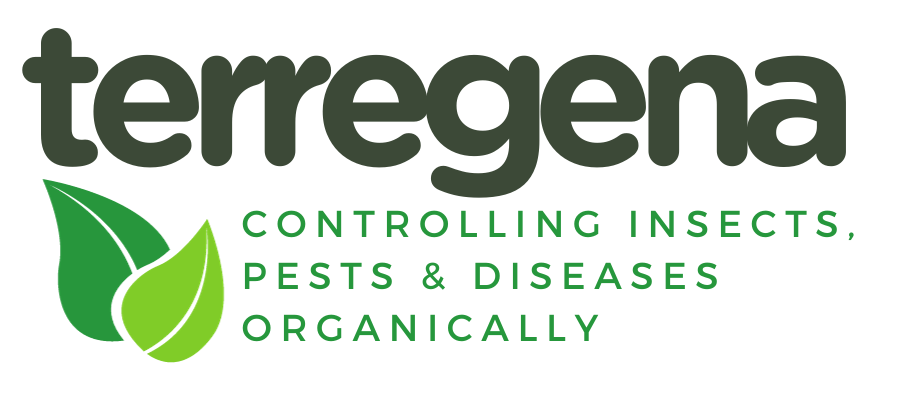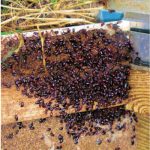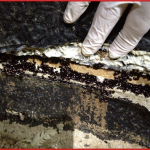House Fly Life Cycle – Poultry
The Life Cycle of the House Fly in Poultry Operations: Understanding the Impact and Solutions
Poultry farming, whether involving chickens, turkeys, or other birds, is a critical component of our food supply chain. However, maintaining a healthy and productive poultry operation, including controlling house flies, comes with challenges. These tiny yet highly resilient insects can cause many problems, ranging from disease transmission to the deadly flystrike (myiasis). This post will explore the life cycle of the house fly within poultry operations, their challenges, and how Beauveria bassiana offers an effective, economical, and environmentally friendly way to manage these pests.
The Life Cycle of the House Fly
The house fly (Musca domestica) has a life cycle intricately linked to the environment of poultry operations. Understanding this cycle is crucial for implementing effective control measures.
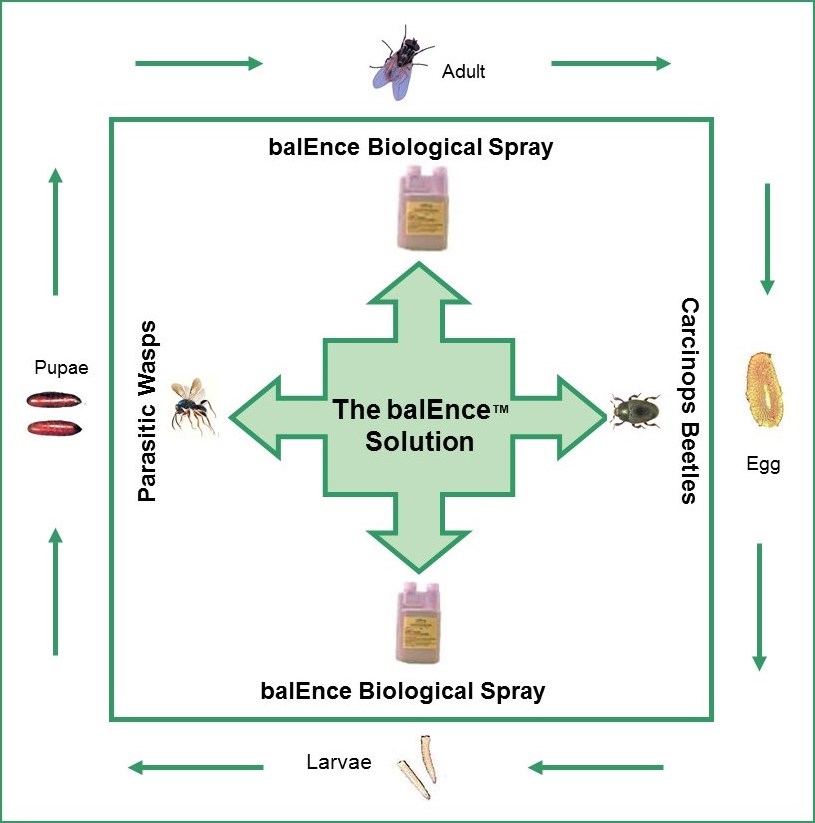
The life cycle of a house fly showcases the stages from egg to adult and how the Beauveria bassiana Biological Spray and natural predators like parasitic wasps and hister beetles help control fly populations in poultry operations.
- Egg Stage House flies begin their life cycle as eggs, typically laid in moist, decaying organic matter, such as the litter in poultry barns. A single female fly can lay up to 150 eggs at a time, and under optimal conditions, these eggs can hatch within 24 hours.
- Larvae Stage Upon hatching, the eggs give rise to larvae, commonly known as maggots. These larvae feed on the organic matter around them, growing rapidly. In poultry operations, the litter accumulating in barns provides an ideal environment for these larvae to thrive. This stage lasts around 4 to 7 days.
- Pupae Stage After feeding, the larvae enter the pupal stage, transforming into adult flies. The pupae are typically found buried slightly beneath the surface of the litter or soil. Depending on environmental conditions, this stage can last anywhere from a few days to several weeks.
- Adult Stage
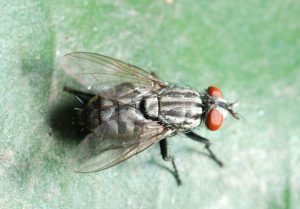
An adult house fly, a common pest in poultry operations, known for spreading diseases and causing stress to both birds and workers.
The final stage of the house fly life cycle is the adult fly, which emerges from the pupae ready to reproduce and continue the cycle. The adult flies you see are only 10 to 15 % of the fly population. The rest of the population consists of eggs, larvae, and pupae. Adult flies are a significant concern in poultry operations due to their ability to spread disease and cause distress to both birds and workers.
The Impact of House Flies on Poultry Operations
House flies are more than just a nuisance; they are a vector for over 65 disease organisms that can affect both humans and poultry. These include serious pathogens like Salmonella, Campylobacter, and E. Coli, which can cause significant health issues and lead to severe economic losses due to decreased productivity and increased veterinary costs making effective fly control essential for maintaining healthy flocks.
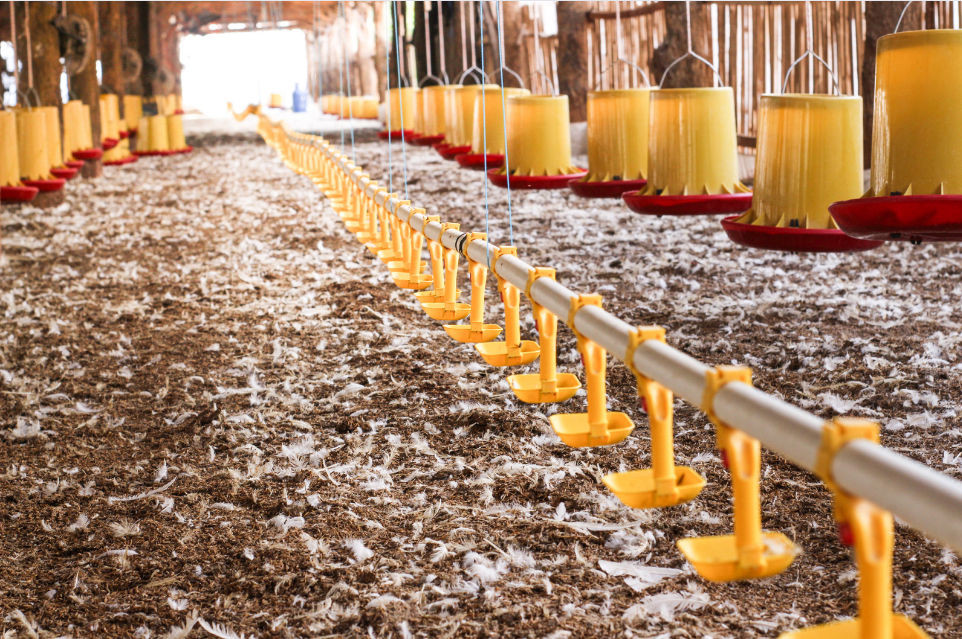
Poultry barn interiors provide the ideal environment for house fly eggs and larvae to thrive, making fly control a crucial part of poultry farming.
Flies also spread parasites such as tapeworms and contribute to the transmission of diseases like Newcastle disease in poultry flocks. House flies can irritate the birds, leading to stress and affecting feed efficiency and egg production.
Furthermore, flies are a nuisance to workers in poultry barns and can lead to complaints from neighboring residential areas, especially in large-scale operations.
Terregena’s balEnce Solution: A Safe and Effective Fly Control Strategy
To combat the problems posed by house flies, Terregena offers the balEnce solution, an effective and environmentally friendly product. Unlike traditional chemical pesticides, balEnce uses the naturally occurring fungus Beauveria bassiana, specifically targeting house flies without harming humans, livestock, pets, or beneficial insects.
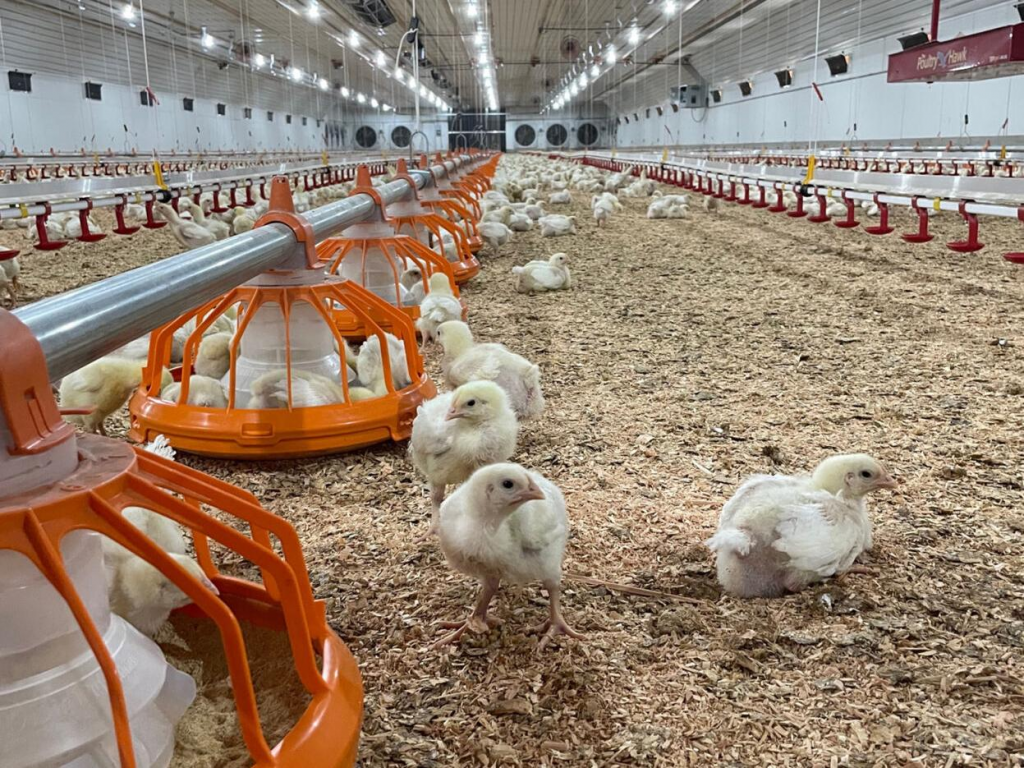
Young chicks in a poultry barn, where managing fly populations is critical to ensuring their health and growth.
The active ingredient in balEnce is a bio-pesticide that occurs naturally in the soil. It is host-specific, meaning it selectively targets and kills adult house flies and their larvae, while being safe for your birds, employees, and even beneficial insects like bees. This makes it an ideal solution for poultry farm fly control.
Moreover, balEnce is part of an integrated pest management system that includes parasitic wasps, also known as fly predators.
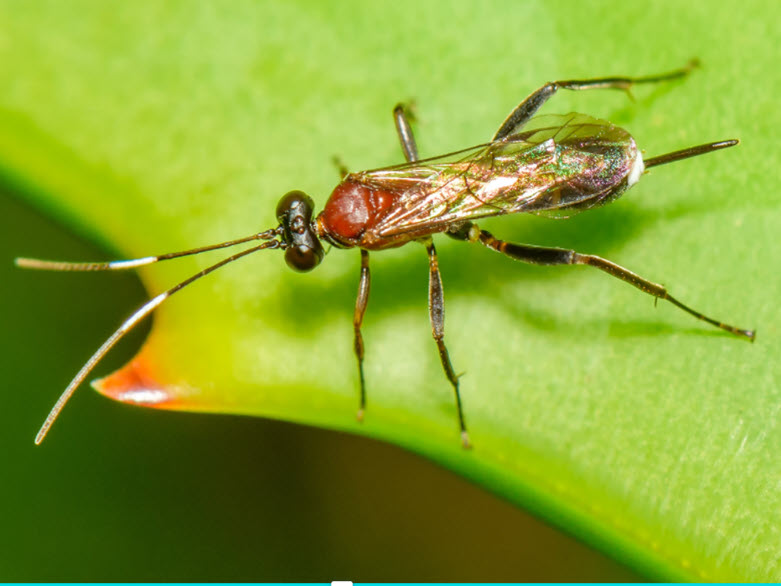
Parasitic wasps, also known as fly predators, are essential to Terregena’s integrated pest management system. They target house fly pupae.
Parasitic wasps are natural enemies of the house fly and can be released in the poultry barn to help control fly populations by targeting the pupae stage. Together, balEnce spray and parasitic wasps provide a comprehensive approach to fly control that is both effective and sustainable.
Conclusion
Effective fly control is essential for maintaining a healthy and productive poultry operation. House flies are more than just a nuisance; they are carriers of disease and parasites that can significantly impact poultry health and production costs. By understanding the life cycle of the house fly and implementing comprehensive control strategies like Terregena’s balEnce™ solution, poultry farmers can protect their flocks, workers, and the surrounding community.
The balEnce solution is effective, safe, and environmentally friendly, making it an ideal choice for modern poultry operations. By combining balEnce spray and parasitic wasps, poultry farms can achieve effective, long-term fly control without toxic chemicals.
If you’re looking for an effective and safe solution to your poultry farm fly problems, consider Terregena’s balEnce products. They offer a proven, natural way to keep your poultry operation healthy and productive.
